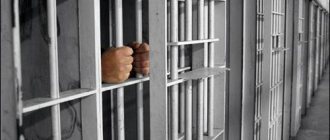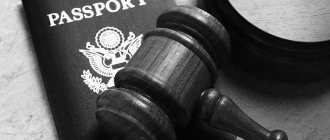Criminal procedural acts
Criminal procedural acts -
is a discipline that studies the set of legal norms that determine the form and content of procedural documents, the procedure for conducting procedural actions and making procedural decisions enshrined in procedural documents.
The Meaning of Discipline
determined by the place and role of criminal procedural acts in the criminal justice system.
Criminal procedural acts are the actions and decisions of officials carrying out criminal proceedings, recorded in a procedural document. These acts entail the emergence, change or termination of criminal procedural relations, are a form of consolidation of authoritative criminal procedural actions and decisions, on the one hand, aimed at protecting and implementing the procedural rights of participants in legal proceedings, on the other. Their legality, validity and motivation guarantee the protection of the rights and legitimate interests of individuals and organizations who have suffered from crimes, as well as the protection of individuals from illegal and unfounded accusations, convictions, and restrictions on their rights and freedoms.
The importance of discipline is determined, in addition, by the need to acquire the skills to solve the problems of criminal proceedings in the conditions of lacunae and inconsistency of criminal procedural legislation.
MATERIALS FOR INDEPENDENT WORK OF STUDENTS AND LISTENERS
Educational and methodological support of the discipline
Questions for testing
Interrogation protocol: concept, meaning and recommendations for compilation: Methodological recommendations for students (listeners) of all forms of education (download text file)
Guidelines for completing tests for full-time students of specialty 030501 “Jurisprudence”
Guidelines for completing tests for correspondence students and students of the Faculty of Education in a shortened time (download text file)
Documents drawn up by a lawyer. Guidelines (download text document)
Sentence. Methodological recommendations (download text document)
Forms of procedural documents of the investigator
Forms of procedural documents for the head of the inquiry body
Forms of procedural documents for the prosecutor
Forms of procedural documents for the head of the investigative body
Forms of procedural documents for the investigator
Forms of procedural documents for pre-trial proceedings (SIZO UIN)
List of questions for the exam
- The concept of criminal process and its purpose.
- Sources of criminal proceedings.
- Forms (types) of criminal proceedings.
- Criminal procedural law. Criminal procedural relations...
- Criminal procedural form and procedural guarantees.
- Stages of the criminal process. A brief description of.
- The concept and system of principles of criminal procedure.
- The principle of legality in criminal proceedings. Administration of justice only by the court.
- The principle of respect for honor and dignity. The principle of personal integrity.
- The principle of protecting the rights and freedoms of man and citizen in criminal proceedings. Inviolability of the home. Secrecy of correspondence, telephone and other conversations, postal and other messages.
- Freedom to evaluate evidence. The right to appeal procedural actions and decisions.
- The language in which legal proceedings are conducted.
- The principle of ensuring the suspect and accused the right to defense.
- Presumption of innocence.
- Competitiveness of the parties.
- Concept and classification of subjects of criminal proceedings. Criminal procedural functions
- Grounds for refusal to initiate a criminal case, termination of a criminal case and criminal prosecution.
- Court in criminal proceedings.
- Procedural position of the suspect.
- The procedural position of the accused in criminal proceedings.
- Defense attorney in criminal proceedings.
- Inquiry body. Interrogator.
- Victim in criminal proceedings.
- Civil plaintiff and civil defendant, their procedural position.
- Prosecutor in criminal proceedings.
- Head of the investigative agency.
- Investigator in criminal proceedings (powers of the investigator, his procedural independence).
- Criminal prosecution. Termination of criminal prosecution.
- Other participants in legal proceedings.
- Subject and limits of proof..
- The concept of evidence, its properties.
- Classification of evidence, its meaning.
- Process of proof. The structure of the evidentiary process.
- The essence and methods of collecting evidence.
- Verification and evaluation of evidence.
- The burden of proof in criminal proceedings.
- Rules for classifying evidence as inadmissible.
- Evidence.
- Protocols of investigative actions and court hearings as evidence.
- Measures of procedural coercion.
- Detention of the suspect.
- Preventive measures (concept, types, grounds and procedure for their election, cancellation and modification).
- Detention as a preventive measure.
- Preventive measures not related to detention.
- Other measures of procedural coercion.
- Procedural deadlines and costs.
- Petitions and complaints.
- Rehabilitation.
- Reasons and grounds for initiating a criminal case.
- The procedure for initiating and refusing to initiate a criminal case.
- General conditions of preliminary investigation.
- Jurisdiction
- General conditions of preliminary investigation.
- Concept and system of investigative actions.
- Inspection, examination, investigative experiment.
- Search, seizure, seizure of postal and telegraphic items, control and recording of negotiations.
- Interrogation, confrontation, identification, verification of testimony.
- Production of forensic examination.
- Involvement as an accused. Arraignment.
- Suspension and resumption of preliminary investigation (concept, grounds, procedure).
- Termination of a criminal case during the preliminary investigation.
- The end of the preliminary investigation with the referral of the case to court.
- Supervision of the prosecutor over the implementation of laws by the bodies of inquiry and preliminary investigation.
- Actions and decisions of the prosecutor in a case received with an indictment.
- Closing indictment. Indictment (essence, meaning, structure).
- Inquiry.
- Preparing for the court hearing.
- The powers of a judge in a criminal case brought to court.
- Preliminary hearing.
- Decisions made by the court in preparation for the trial.
- Jurisdiction and its types.
- The concept and meaning of the general conditions of trial.
- Concept and structure of judicial proceedings.
- Preparatory part of the court session.
- Judicial investigation.
- Judicial debate. The last word of the defendant.
- A verdict is an act of justice. Legality, validity, motivation and fairness of the sentence. Sentence structure.
- Sentencing procedure. Issues resolved by the court when rendering a sentence.
- Conviction.
- Grounds for the acquittal.
- A special procedure for making a court decision if the accused agrees with the charge brought against him.
- Proceedings in criminal cases under the jurisdiction of a magistrate.
- Features of judicial investigation in a jury trial.
- The procedure for reaching a verdict and sentence in a jury trial.
- Appealing court decisions that have not entered into legal force.
- Appeal procedure for consideration of a criminal case.
- Main features of cassation.
- Grounds for canceling or changing a decision in cassation.
- Limits of the rights of the appellate and cassation instances.
- The procedure for applying for the execution of sentences, rulings and decisions.
- Proceedings to consider and resolve issues related to the execution of a sentence.
- The essence of supervisory proceedings.
- Grounds for canceling or changing a court decision in a supervisory authority. Limits of the rights of the supervisory authority.
- Resumption of criminal proceedings due to new or newly discovered circumstances (grounds, procedure, terms).
- Peculiarities of proceedings in cases of minors.
- Proceedings for the application of compulsory medical measures.
- Peculiarities of criminal proceedings in relation to certain categories of persons.
- Interaction with foreign states and international organizations in the field of criminal proceedings.
- Extradition of a person for criminal prosecution or execution of a sentence and transfer of the person to serve the sentence to the state of which he is a citizen.
The concept of criminal procedural acts. Procedural decisions and protocols, their characteristics
These are written acts that record the progress and results of various investigative actions (inspection, presentation for identification, etc.). These include protocols of investigative actions and protocols of court hearings (Article 83 of the Code of Criminal Procedure). During pre-trial proceedings, each investigative action is documented in a separate protocol; during the judicial investigation, all actions carried out by the court are recorded in one document - the protocol of the court session.
The protocols of the following investigative actions for collecting evidence have independent evidentiary value: inspection (including examination of the corpse and exhumation), examination, seizure, search, presentation for identification, investigative experiment and verification of testimony on the spot. These protocols should be distinguished from other protocols, which are also drawn up during the investigation and trial of the case, but are not independent sources of evidence (for example, a protocol of interrogation, confrontation). In these cases, the evidence of the interrogated persons (witnesses, accused, etc.) has evidentiary force, and not the protocol, which acts only as a technical means of recording testimony and does not have independent significance as a source of evidence.
The protocols of other investigative actions do not record evidence, but only reflect the investigator’s fulfillment of certain requirements of the law (for example, the protocol of familiarizing the accused with the materials of the criminal case), and therefore they do not have evidentiary value. When carrying out investigative actions, various scientific and technical means can be used - photography, audio and video recording, drawings, plans, diagrams, casts and prints of traces that are attached to the protocol (Article 166 of the Code of Criminal Procedure).
All these sources of evidentiary information are not named among the individual types of evidence (Article 74 of the Code of Criminal Procedure), therefore they are usually called appendices to the protocols. They can have evidentiary value only if there is a protocol that reflects a specific fact, as well as the conditions for making casts and impressions. However, they not only confirm and illustrate the contents of the protocol, but may also contain additional evidentiary information.
From the point of view of the theory of evidence, the minutes of the hearing of the court of first and appellate instances, in which the criminal case is considered on its merits, are of greatest value. Such protocols reflect from beginning to end all judicial actions and decisions committed or adopted during the trial. It serves as independent evidence (Article 83 of the Code of Criminal Procedure) and as such can be used when reviewing a given criminal case by a higher court, as well as when reconsidering it by a court of first or appellate instance.
Protocols of investigative actions and records of court hearings are admitted as evidence only if they meet the requirements established by law. Therefore, violations of these rules may result in the invalidity - in whole or in part - of the protocol as evidence (for example, the absence of signatures of witnesses or the presentation of an object in the singular for identification).
These are written acts that record the progress and results of various investigative actions (inspection, presentation for identification, etc.). These include protocols of investigative actions and protocols of court hearings (Article 83 of the Code of Criminal Procedure). During pre-trial proceedings, each investigative action is documented in a separate protocol; during the judicial investigation, all actions carried out by the court are recorded in one document - the protocol of the court session.
The protocols of the following investigative actions for collecting evidence have independent evidentiary value: inspection (including examination of the corpse and exhumation), examination, seizure, search, presentation for identification, investigative experiment and verification of testimony on the spot. These protocols should be distinguished from other protocols, which are also drawn up during the investigation and trial of the case, but are not independent sources of evidence (for example, a protocol of interrogation, confrontation). In these cases, the evidence of the interrogated persons (witnesses, accused, etc.) has evidentiary force, and not the protocol, which acts only as a technical means of recording testimony and does not have independent significance as a source of evidence.
The protocols of other investigative actions do not record evidence, but only reflect the investigator’s fulfillment of certain requirements of the law (for example, the protocol of familiarizing the accused with the materials of the criminal case), and therefore they do not have evidentiary value. When carrying out investigative actions, various scientific and technical means can be used - photography, audio and video recording, drawings, plans, diagrams, casts and prints of traces that are attached to the protocol (Article 166 of the Code of Criminal Procedure).
All these sources of evidentiary information are not named among the individual types of evidence (Article 74 of the Code of Criminal Procedure), therefore they are usually called appendices to the protocols. They can have evidentiary value only if there is a protocol that reflects a specific fact, as well as the conditions for making casts and impressions. However, they not only confirm and illustrate the contents of the protocol, but may also contain additional evidentiary information.
From the point of view of the theory of evidence, the minutes of the hearing of the court of first and appellate instances, in which the criminal case is considered on its merits, are of greatest value. Such protocols reflect from beginning to end all judicial actions and decisions committed or adopted during the trial. It serves as independent evidence (Article 83 of the Code of Criminal Procedure) and as such can be used when reviewing a given criminal case by a higher court, as well as when reconsidering it by a court of first or appellate instance.
Protocols of investigative actions and records of court hearings are admitted as evidence only if they meet the requirements established by law. Therefore, violations of these rules may result in the invalidity - in whole or in part - of the protocol as evidence (for example, the absence of signatures of witnesses or the presentation of an object in the singular for identification).
Protocols of investigative and judicial actions. Other documents
Protocols of investigative and judicial actions are written acts (documents) in which, in the manner established by the criminal procedural law, on the basis of direct or indirect perception, information about the circumstances to be established in a criminal case is recorded.
According to Art. 83 of the Code of Criminal Procedure of the Russian Federation, protocols of investigative actions and court hearings are admitted as evidence if they meet the requirements established by the criminal procedure law.
The legislator did not list the protocols of investigative actions, which are means of proof. Meanwhile, in criminal proceedings, a significant number of protocols are drawn up that do not and cannot contain evidence (for example, a protocol of presenting criminal case materials to participants in criminal proceedings for review).
Protocols (list)
The means of proof (or sources of evidence) under consideration may include:
- protocol of investigative inspection of any object;
- investigative search protocol;
- investigative seizure protocol;
- investigative presentation protocol for identification;
- protocol of investigative examination;
- investigative experiment protocol;
- protocol of arrest of the suspect;
- protocol of seizure of postal and telegraph items, their inspection and seizure;
- protocol for monitoring and recording telephone and other conversations;
- protocol of investigative verification of testimony on the spot;
- minutes of the court hearing;
- protocols of individual court actions.
Comment
The overwhelming majority of proceduralists do not consider protocols of interrogations of witnesses, victims, suspects and accused to be a means of evidence, since the testimony of the interrogated persons has evidentiary force.
However, there is a point of view according to which interrogation protocols are derivative means of proof.
It seems that this point of view is close to the truth, taking into account the rules for the disclosure in court proceedings of the interrogation protocols of these persons, established by the current criminal procedure law.
These rules are that, under certain circumstances, the records of the interrogation of the defendant, victim and witness can be read out in court proceedings, and the information contained in them can be used as evidence.
A special place among the means of evidence under consideration is occupied by the protocol of the court session, which records all actions carried out in court (with the exception of the examination, the results of which are documented in a separate document) and decisions made, with the exception of decisions taken in the deliberation room, and the final decision - the verdict, orders or rulings of a court (or judge).
The procedure for conducting and processing investigative and judicial actions is regulated in detail by the criminal procedure law.
These rules are an important guarantee of the reliability of the information contained in the investigative report.
Other documents as a means of proof
The term “document” in criminal proceedings is a generic concept.
This concept includes protocols of investigative and other procedural actions, expert and specialist opinions, decisions of officials, etc.
For the convenience of the law enforcement officer in criminal proceedings, the legislator indicated “other documents” as a means of proof, i.e. documents not previously listed by him, not specified in Art. 74 Code of Criminal Procedure of the Russian Federation.
Other documents are means of proof in the form of various documents, if the circumstances and facts certified or stated in them by officials of enterprises, institutions, organizations or citizens are important for the correct consideration and resolution of a criminal case.
Documents may contain information recorded both in writing and in another form.
These may include photographic and (or) filming materials, audio and (or) video recordings and other media received, requested or presented in accordance with the requirements of the criminal procedure law.
This means of proof includes various characteristics, certificates, acts, powers of attorney, explanations, license to drive vehicles, diplomas certifying receipt of appropriate education, etc.
This type of document has features that are determined by the time, method and forms of their creation, methods of obtaining and attaching to a criminal case as such.
In the most general form, another document is understood as any object of the material world on which conventional signs (letters, numbers, codes, etc.) record any information about some objects or their images.
The most common are written documents of a handwritten and printed (computer) nature.
Recently, machine (or electronic) documentation has appeared.
Consequently, for another document, as a means of proof in criminal proceedings, the material from which it is made, the method of its creation, and the code in which its content is expressed do not matter.
When assessing other documents, the competence of the official or citizen who compiled them, the availability of the necessary details, the content of these documents, as well as their place in the system of available evidence in a criminal case are taken into account.
Other documents must be distinguished from documents - material evidence.
A document that has the characteristics specified in Art. 81 of the Code of Criminal Procedure of the Russian Federation, is material evidence if it is recognized as such and attached to the criminal case in the manner established by the criminal procedure law.
0
Organization of crime investigation
- The concept of a procedural act. Procedural documents in criminal proceedings are paper media related to a specific case. They record the actions of the investigation, inquiry or other authorized persons. The presence of executed procedural documents in criminal proceedings affects the quality of the investigative measures taken. At the preliminary stage of inquiry, actions and conclusions regarding them are recorded. The purpose of documenting the stages of the process is the legal component of the participants in the proceedings. Documentary evidence of evidence is drawn up in accordance with the requirements of the Code of Criminal Procedure and affects admissibility. Compliance with the established rules for recording facts in writing will preserve and provide grounds for checking, evaluating and studying the evidence in the future.







